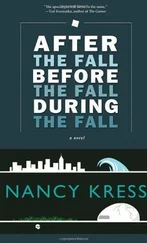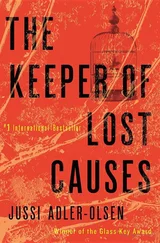Jack and I had some great times together. In 1942, he was touring with the Cole Brothers Circus and wanted some company. I met the circus in North Carolina and spent three days with Jack on the circus train. I’ll never forget Jack charming the ladies….
In 1942, the Cole Brothers Circus was Clyde Beatty’s circus, with no connection to war bonds or a war effort of any kind. In 1945, in other words after the war, it is true, when Dempsey went on a tour selling “savings bonds,” Sirica went with him. “While thoroughly enjoying myself,” Sirica writes, “I also felt I was doing something important for my country.” Perhaps he was.
Among Sirica’s unlikely, and in this book and his legend unmentioned, friends and correspondents is FBI Director J. Edgar Hoover. Why would a judge of Sirica’s renown not have become friends with the FBI director? Because Sirica was not yet at all renowned. Hoover died in May 1972, a month before the break-in at the Watergate. His friendship with Sirica dates from the fifties — overlapping, for all one knows, with the friendship with Senator Joseph McCarthy — when Hoover, fighting the Communist menace, was still denying the very existence of organized crime. There must be a true story here somewhere, but so far no one has told or apparently even looked into it.
Contrary to his reputation as a hero, Sirica was in fact a corrupt, incompetent, and dishonest figure, with a close connection to Senator Joseph McCarthy and clear ties to organized crime.
That is all I said or wanted to say about the subject. If a reader were to read this sentence, at least as quoted and discussed in the Times , to suggest that while Sirica was presiding over the Watergate cases he was taking payoffs from the mob, that is not a plausible reading. I was writing, after all, about Sirica’s autobiography. “A close connection to Senator Joseph McCarthy”—in the phrase that directly precedes “clear ties to organized crime”—would necessarily have ended on May 2, 1957, when McCarthy died. Sirica had not yet even assumed his position on the bench. If I had meant that Sirica was taking such payments on the bench or at any other time, I would of course have said so.
But enough. I do not need and never did intend to investigate the story of John J. Sirica. At the time I read his book, I had already written extensively about Watergate. I had also worked, until the day of President Nixon’s resignation, for the impeachment inquiry. It only became clear, from the book itself and then in retrospect, that the legend, the accumulation of clichés, received ideas, and bromides — the “scrupulously honest man,” the “hero,” who rises from humble beginnings to confront “the most powerful man on earth” and to find (if need be in disregard of the rules of evidence) “the truth for the American people”—had almost no basis in reality.
The legend of Sirica as a “scupulously honest man” and a “hero” rests, of course, on the Watergate trials. The conduct of those trials, criticized at the time, raises questions of all kinds. It is by no means clear, for example, why Judge Sirica assigned the cases to himself. There is evidence that, far from seeking to expedite the Watergate investigations, Sirica may have sought for several crucial months to delay them. In putting off the first trial until after the election, he says he was determined to have “a fair trial, not a quick one.” Look at that phrase a moment. The fairness of his conduct in those trials has always been precisely the matter most in dispute. In October, on account of “back pain,” he postponed the trials again, until January. It may also be that, in spite of the legend, Judge Sirica was less interested in getting at, as he put it, the “truth for the American people” than in some entirely other agenda — for example, in frustrating the investigation of the House Committee on Banking and Currency, the Patman Committee, which was the one investigative body that would have known where to look for the deeper truth about the Watergate — not the burglary or the cover-up but the sources of the cash. The Patman investigation concerned President Nixon so intensely that he sent then-Congressman Gerald Ford to persuade the committee Republicans to deny Patman the subpoena power. He sent Attorney General Richard Kleindienst, an old friend of Sirica’s, to persuade the judge, in the name of “protecting the defendants’ civil rights,” to issue an unusually broad “gag order,” forbidding anyone (government officers, witnesses, defendants, lawyers) from making statements about “any aspects of the case” to anyone, including congressional committees. The gag order, as even Sirica acknowledged, “strengthened the hand of the administration in stonewalling Patman.” Patman protested, in a five-page letter, to Sirica. By the time Sirica agreed to modify his order, Congressman Ford had persuaded the Republicans. Subpoena power for Patman’s Committee on Banking and Currency was denied.
A great deal has been made of what Sirica himself seems to consider the crucial break in the Watergate case: a letter from one of the convicted Watergate burglars, James McCord, alleging that perjury had been committed, that persons higher up than the original burglars were implicated, that “pressure” had been applied to the defendants to “plead guilty and remain silent.” McCord himself was a mysterious figure, formerly CIA and formerly FBI, as well as former guard of John Mitchell’s loquacious and frequently inebriated wife. On Friday, March 13, 1973, Judge Sirica read McCord’s letter melodramatically in open court. Ever since, that reading has been regarded as a turning point in the entire case. This seems highly improbable for two reasons: McCord did not know (or at least did not divulge) anything either important or admissible in the case; and he had sent a copy of his letter to the Los Angeles Times , so that it would have become public in any event.
The accepted chronology of Sirica’s life was always mystifying, and as a career pattern it is almost incomprehensible. It may even be that the real progression in Sirica’s life was not as the legend would have it, but rather this: first, the man of Prohibition and illegal boxing, in the U.S. Attorney’s office; then McCarthy’s man and even J. Edgar Hoover’s, with whatever politics that implies; then perhaps just the Republican Party’s man, its emissary to Italian communities (mostly, in those days Democratic); then a federal judge, the worst on the Washington bench; then Nixon’s man, an irascible figure who repeatedly expresses disdain for the rules of evidence; then, in his unprecedented use of “provisional sentencing” as a form of coercion, a vain sort of bully, who is concerned not “to sit like some nincompoop” while the defendants, under appropriate sentences, are “laughing at us”; then, a sort of obsessed prosecutor, who does not really discover any “truth”; and finally, in his vanity and posturing, a man, a “hero,” for the press.
A judge, after all, is not meant to be a hero. The only judges in our times who could legitimately be described as heroes were Frank Johnson, Elbert Tuttle, John Minor Wisdom, and the other judges of the Fifth Circuit, who took genuine risks, and suffered for them, for justice in the South. And judges, under the Constitution, are not meant to ascertain, least of all to prosecute or to coerce by sentencing, the “truth,” “for the American people,” or even for the jury. They are to preside fairly, under the adversary system, over cases presented by lawyers for the plaintiffs and the defendants before them. Anything else, whether it is posturing for the media, or coercing defendants with outrageous “provisional sentences,” or working on behalf of some party not before the court, undermines the system. Far from demonstrating that “no man is above the law,” it suggests that the judge himself is above it. We do not, under the Constitution, have a system wherein judges are inquisitors. In any event, though there may be material for a real biography of Judge Sirica, there is also this inescapable and awkward truth: Even in the Watergate investigations, he made no important contribution, except to the lore.
Читать дальше






![Джеффри Арчер - The Short, the Long and the Tall [С иллюстрациями]](/books/388600/dzheffri-archer-the-short-the-long-and-the-tall-s-thumb.webp)





